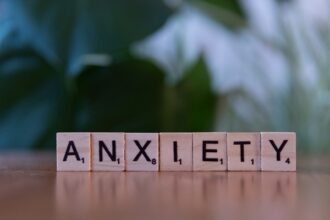In today’s fast-paced world, it’s almost impossible to escape the pervasive influence of technology. You may find yourself reaching for your smartphone the moment you wake up, scrolling through social media feeds, or checking emails during meals. This behavior is not merely a habit; it stems from a deeper psychological phenomenon known as digital cravings.
These cravings are often fueled by the instant gratification that technology provides. Each notification, like, or message can trigger a release of dopamine in your brain, creating a cycle of desire that keeps you coming back for more. Understanding this cycle is crucial for recognizing how it affects your daily life.
You might notice that these digital cravings can lead to a sense of urgency, compelling you to stay connected at all times. This constant need for engagement can overshadow other important aspects of your life, such as personal relationships, hobbies, and even your mental well-being. By acknowledging the nature of these cravings, you can begin to take steps toward regaining control over your digital consumption.
It’s essential to reflect on how these habits shape your daily experiences and interactions, allowing you to identify areas where you may want to make changes.
Key Takeaways
- Understanding Digital Cravings: Recognize the reasons behind digital cravings and the impact on mental health.
- Recognizing the Impact of Digital Overuse: Understand the negative effects of excessive digital use on well-being and relationships.
- Setting Boundaries and Limits: Establish clear boundaries and limits for digital use to maintain a healthy balance.
- Finding Alternative Activities: Explore alternative activities to reduce reliance on digital devices for entertainment and relaxation.
- Practicing Mindfulness and Awareness: Cultivate mindfulness and awareness to be present and intentional in digital interactions.
Recognizing the Impact of Digital Overuse
As you delve deeper into your relationship with technology, it becomes increasingly important to recognize the impact of digital overuse on your life. You may find that excessive screen time leads to feelings of anxiety, depression, or even loneliness. The irony is that while technology connects you with others, it can also create a sense of isolation.
You might be spending hours engaging with friends online while neglecting face-to-face interactions that foster genuine connections. This disconnect can leave you feeling unfulfilled and craving more meaningful relationships. Moreover, digital overuse can affect your physical health as well.
You may experience eye strain from prolonged screen time or develop poor posture from hunching over devices for extended periods. Sleep disturbances are another common consequence; scrolling through your phone late into the night can disrupt your sleep cycle and leave you feeling fatigued the next day. By recognizing these impacts, you can start to understand the importance of finding a healthier balance in your digital life.
Setting Boundaries and Limits

Once you’ve acknowledged the effects of digital overuse, the next step is to set boundaries and limits for yourself. This process begins with self-reflection; consider how much time you currently spend on various devices and what activities you might be neglecting as a result. You may want to establish specific times during the day when you will check your phone or engage with social media, rather than allowing it to interrupt your daily activities.
By creating designated “tech-free” zones or times, you can reclaim moments that would otherwise be consumed by digital distractions. In addition to time limits, think about the content you consume. You might find that certain apps or websites contribute more to your cravings than others.
By curating your digital environment and unfollowing accounts that don’t add value to your life, you can create a more positive online experience. Setting boundaries is not about completely eliminating technology from your life; rather, it’s about using it in a way that enhances your well-being rather than detracts from it.
Finding Alternative Activities
| Activity | Number of Participants | Duration (hours) |
|---|---|---|
| Hiking | 25 | 3 |
| Cooking Class | 15 | 2 |
| Art Workshop | 20 | 4 |
To effectively combat digital cravings, it’s essential to find alternative activities that engage your mind and body in fulfilling ways. You might consider exploring hobbies that have long been on your list but were overshadowed by screen time. Whether it’s painting, gardening, or learning a musical instrument, immersing yourself in creative pursuits can provide a sense of accomplishment and joy that digital interactions often lack.
Physical activities also play a crucial role in breaking the cycle of digital dependence. You could take up jogging, join a local sports team, or even practice yoga. Engaging in physical exercise not only boosts your mood but also helps reduce stress and anxiety levels.
By filling your time with enriching activities, you’ll find that the urge to reach for your device diminishes as you discover new passions and interests.
Practicing Mindfulness and Awareness
Incorporating mindfulness into your daily routine can significantly enhance your ability to manage digital cravings. Mindfulness encourages you to be present in the moment and aware of your thoughts and feelings without judgment. You might start by setting aside a few minutes each day for mindfulness meditation or simply taking deep breaths while focusing on your surroundings.
This practice can help you become more attuned to when and why you feel the urge to engage with technology. As you cultivate mindfulness, pay attention to how technology affects your mood and energy levels throughout the day. You may notice patterns in your behavior—perhaps you reach for your phone out of boredom or stress rather than genuine interest.
By recognizing these triggers, you can make more conscious choices about when and how to engage with digital devices, ultimately leading to a healthier relationship with technology.
Seeking Support and Accountability

Embarking on a journey toward reducing digital overuse can be challenging, but seeking support from friends or family can make a significant difference. You might consider sharing your goals with someone who understands your struggles and can help keep you accountable. This could involve setting up regular check-ins where you discuss your progress or challenges related to managing screen time.
Additionally, joining support groups or online communities focused on digital wellness can provide encouragement and motivation. Engaging with others who share similar goals allows you to exchange tips and strategies for overcoming digital cravings. Knowing that you’re not alone in this journey can empower you to stay committed to making positive changes in your life.
Using Technology to Manage Technology
Ironically, technology can also serve as a tool for managing your relationship with itself. Various apps and features are designed to help you monitor and limit screen time effectively. You might explore options like screen time trackers that provide insights into how much time you spend on different applications or websites.
These tools can help you identify patterns in your usage and encourage more mindful engagement. Moreover, consider utilizing features like “Do Not Disturb” modes during specific hours or setting app limits that restrict access after a certain amount of time each day. By leveraging technology in this way, you can create an environment that supports healthier habits while still enjoying the benefits of connectivity when needed.
Creating a Digital Detox Plan
If you find that digital cravings are significantly impacting your life, it may be time to consider a more structured approach through a digital detox plan. Start by determining how long you want this detox period to last—whether it’s a weekend, a week, or even longer—and outline specific goals for what you hope to achieve during this time. You might decide to eliminate social media entirely or limit screen time to essential tasks only.
Engage in activities that bring you joy and fulfillment without the interference of screens. You could spend time outdoors, read books, or reconnect with friends and family through face-to-face interactions.
By intentionally stepping away from technology, you’ll likely gain valuable insights into how it affects your life and what changes you want to implement moving forward.
Prioritizing Real-Life Connections
In an age where virtual interactions dominate our social landscape, prioritizing real-life connections is more important than ever. You may find that spending quality time with friends and family enriches your life in ways that online interactions cannot replicate. Consider organizing regular gatherings or outings where technology takes a backseat—perhaps a game night, picnic, or simply enjoying a meal together without distractions.
Additionally, make an effort to engage in conversations without the interference of devices. When spending time with loved ones, put away your phone and focus on being present in the moment. This practice not only strengthens relationships but also reinforces the idea that meaningful connections are built through shared experiences rather than through screens.
Finding Balance in a Digital World
Achieving balance in today’s digital world requires ongoing effort and self-awareness. As you navigate this landscape, remember that technology is not inherently bad; it’s how you choose to engage with it that matters most. Strive for moderation by incorporating healthy habits into your daily routine while still allowing yourself moments of enjoyment through technology.
You might find it helpful to regularly reassess your relationship with digital devices—are they enhancing or detracting from your life? By maintaining an open dialogue with yourself about these questions, you can adapt your habits as needed and ensure that technology serves as a tool for growth rather than an obstacle.
Seeking Professional Help if Needed
If you find that digital cravings have escalated into compulsive behavior that significantly impacts your daily life, seeking professional help may be necessary. Therapists and counselors specializing in behavioral addictions can provide valuable insights and strategies tailored to your unique situation. They can help you explore underlying issues contributing to excessive screen time and guide you toward healthier coping mechanisms.
Remember that seeking help is not a sign of weakness; rather, it demonstrates strength and commitment to improving your well-being. With the right support system in place, you can work toward reclaiming control over your digital habits and fostering a healthier relationship with technology in all aspects of your life. In conclusion, navigating the complexities of our digital world requires awareness, intention, and effort on your part.
By understanding digital cravings, recognizing their impact, setting boundaries, finding alternative activities, practicing mindfulness, seeking support, utilizing technology wisely, creating detox plans, prioritizing real-life connections, striving for balance, and seeking professional help when necessary, you can cultivate a healthier relationship with technology that enhances rather than detracts from your life experiences.
One effective strategy is to set specific times for checking devices, allowing for uninterrupted focus on tasks and personal interactions. Additionally, creating tech-free zones in your home can help reduce the temptation to constantly check your phone or computer. For more insights on managing digital cravings and achieving a healthier balance with technology, you can explore this related article that offers practical tips and strategies.
WATCH THIS! Your Brain Is Not Bored; AI Is Stealing Your Dopamine (76-Minute Documentary)
FAQs
What are digital cravings?
Digital cravings refer to the strong desire or urge to constantly use digital devices such as smartphones, tablets, computers, and social media platforms.
What are the common signs of digital cravings?
Common signs of digital cravings include constantly checking your phone or social media, feeling anxious or restless when not using digital devices, neglecting other responsibilities in favor of digital use, and difficulty focusing on tasks without digital distractions.
How can digital cravings impact mental health?
Excessive digital use can lead to increased stress, anxiety, depression, and decreased overall well-being. It can also negatively impact sleep patterns and lead to a decrease in real-life social interactions.
What are some strategies for managing digital cravings?
Strategies for managing digital cravings include setting specific time limits for digital use, practicing mindfulness and being present in the moment, engaging in offline activities such as exercise or hobbies, and seeking support from friends, family, or mental health professionals if needed.
Why is it important to manage digital cravings?
Managing digital cravings is important for maintaining a healthy balance between digital and real-life activities, improving mental and emotional well-being, and fostering meaningful connections with others.




